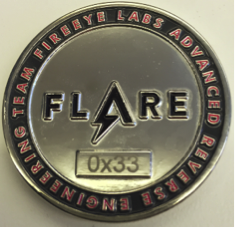Write-up
This is a write-up for the picoCTF challenge “WebNet1”, classified as a medium forensics challenge. The prompt states: “We found this packet capture and key. Recover the flag.”
Upon downloading the challenge files, we receive capture.pcap and picopico.key. To begin, we inspect the key file to determine if it is a public or private key.
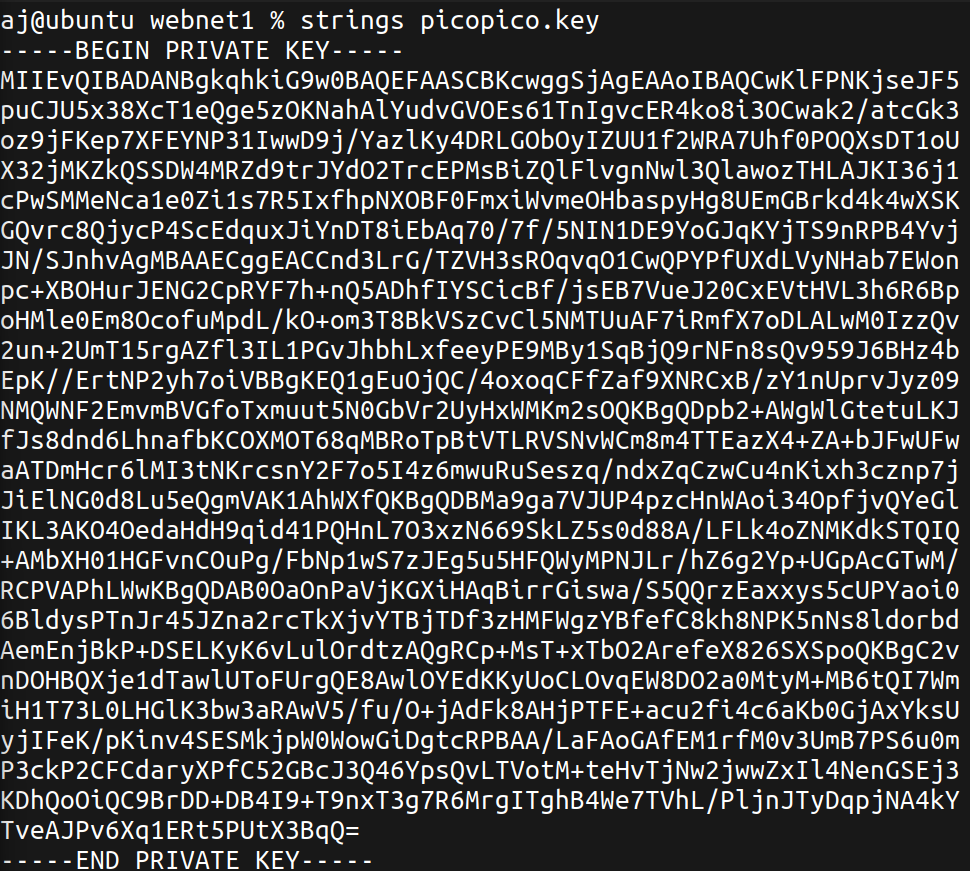
It appears to be a private key. This is crucial because it means we can potentially decrypt encrypted traffic. Next, let’s open the PCAP file using Wireshark. The capture contains traffic running over TLS, which will be unreadable due to encryption.
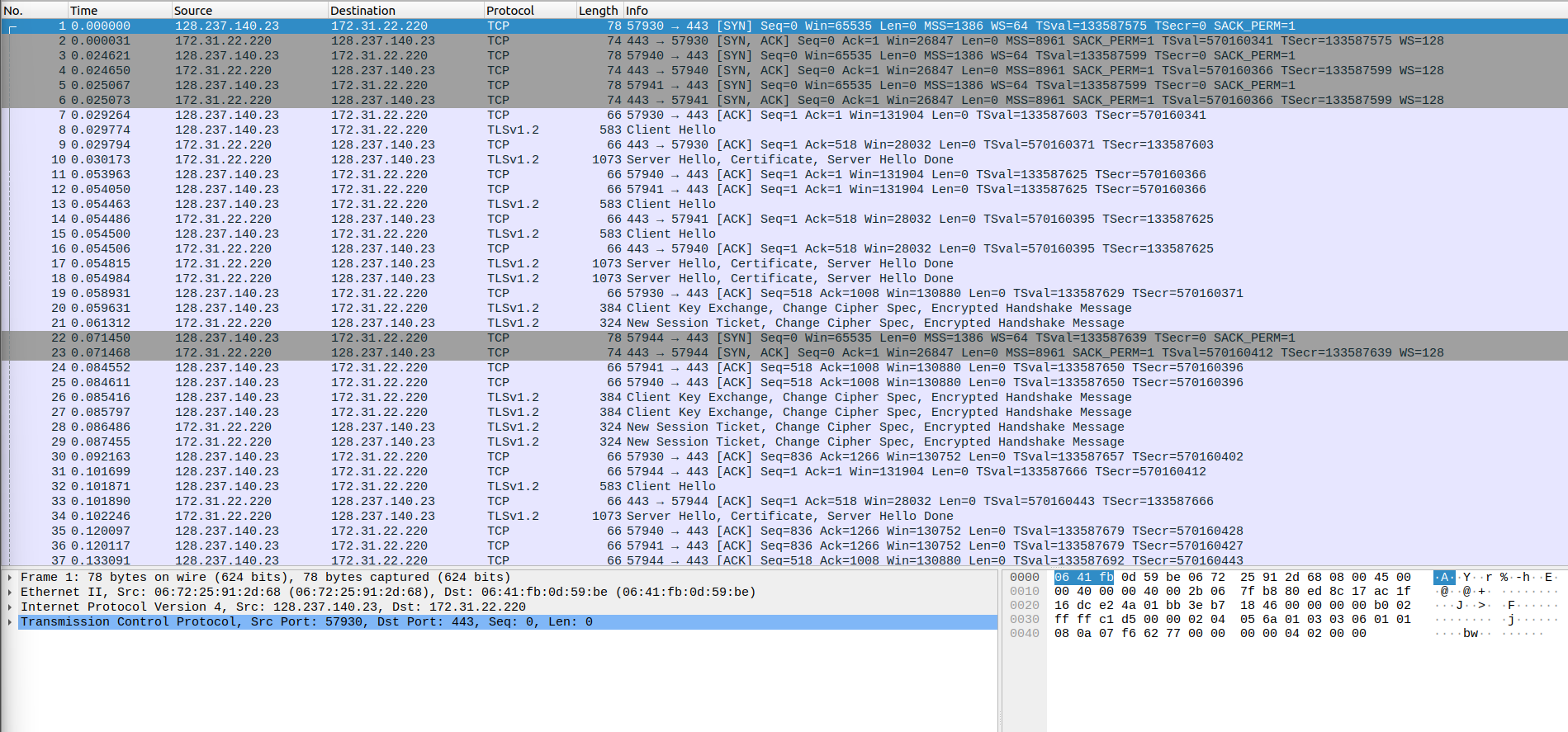
Fortunately, we have a private key file that we can use to decrypt the traffic. In Wireshark, go to Edit > Preferences > Protocols > TLS. Click the “Edit” button under “RSA keys list,” then add picopico.key and hit OK. This step allows us to decrypt the encrypted packets.
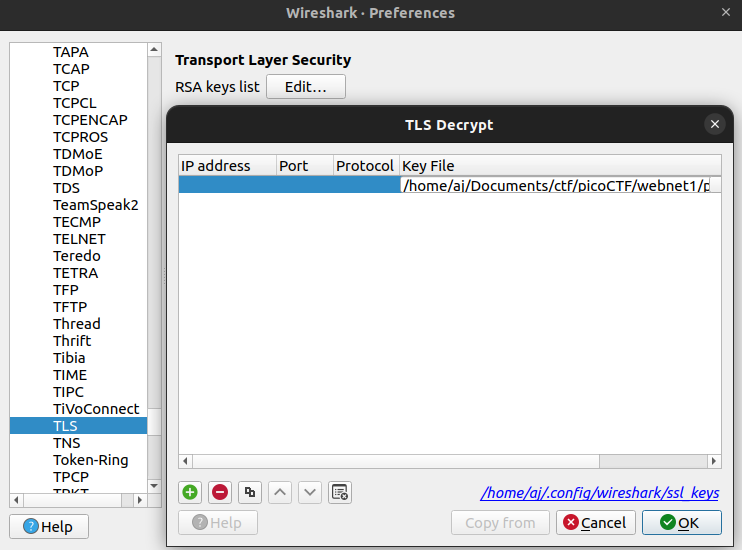
With the encryption key added, we can return to the capture display and view the decrypted packets. Now, we see HTTP packets exchanged between 128.237.140.23 and 172.31.22.220.

The first HTTP packet is a GET request for /second.html. In the HTTP header, there’s a Pico-Flag picoCTF{this.is.not.your.flag.anymore}, which of course I tried but is not the correct flag 😅
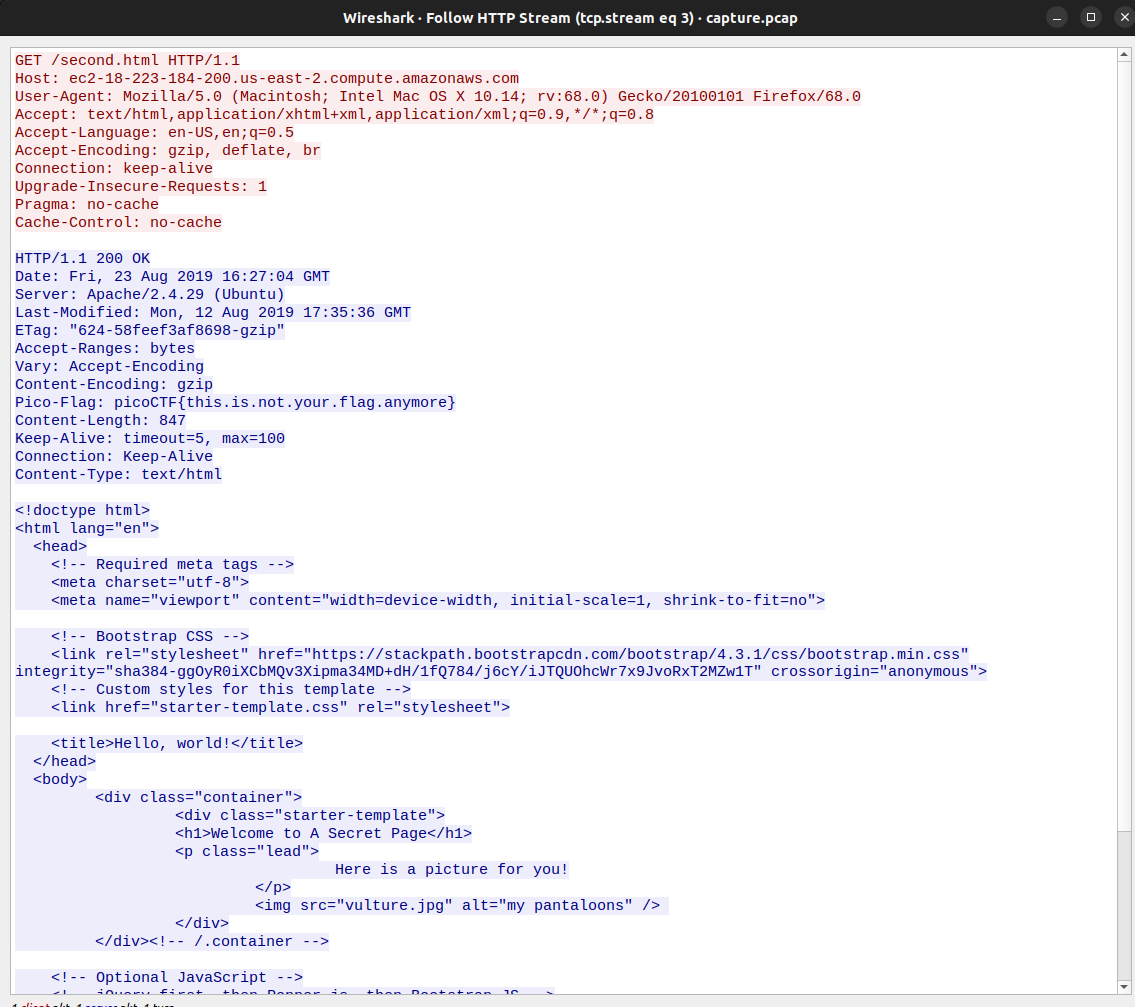
The subsequent HTTP streams include more GET requests for files, including an image called /vulture.jpg. Instead of following each stream, let’s extract all HTTP stream files from the capture.
In Wireshark, go to File > Export Objects > HTTP. We can save all listed files to a directory named extracted.

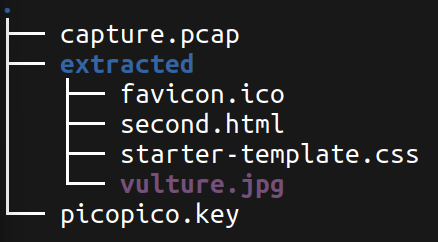
Now, let’s open second.html since the other files appear to be supporting data.

We see the HTML, CSS, and image populated on the page. Scanning through the HTML and CSS is quick because they are ASCII printable and we can use the strings command. Next, we examine vulture.jpg.
Next, we examine vulture.jpg. With image files, I usually check for steganography first. One of my go-to tools is Stegsolve. In this case, I started with a hexdump to view the metadata inside the file and discovered the flag. It’s always good to check the metadata first before diving into more complex steganographic analysis.
hexdump -C vulture.jpg | less
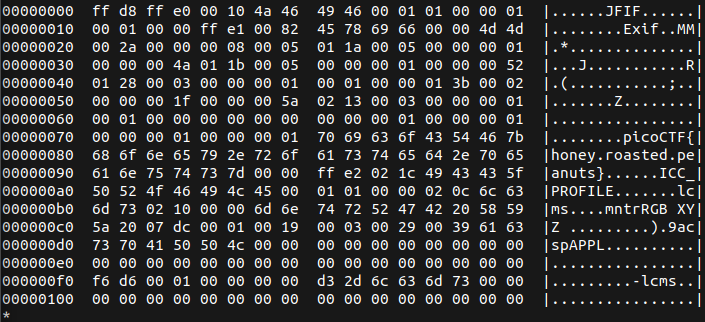
picoCTF{honey.roasted.peanuts}











